Read next
The latest news, updates and expert views for ambitious, high-achieving and purpose-driven homeowners and property entrepreneurs.

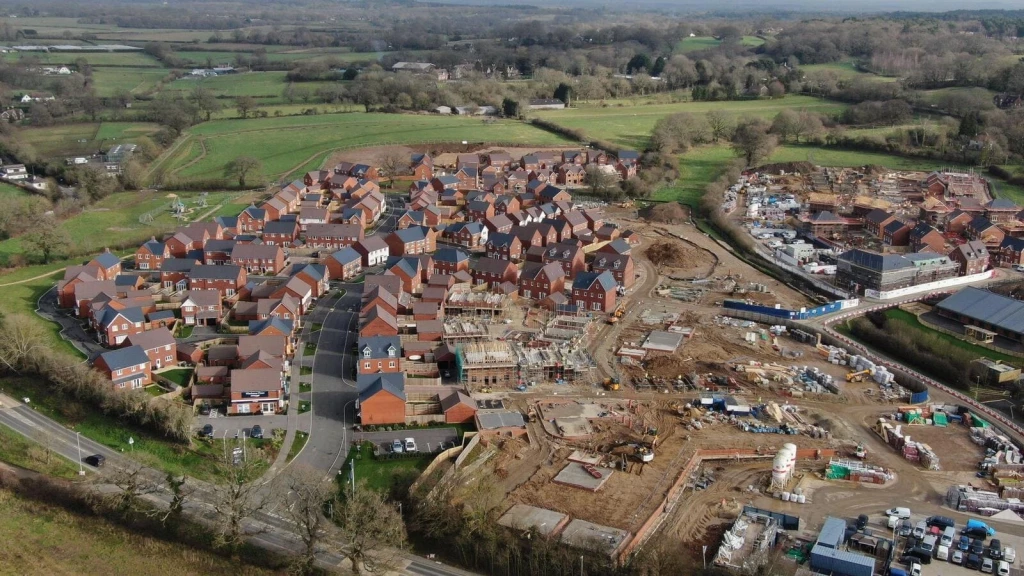
There are two types of people in this world. Those who resist change and cling to nostalgia - and those who move with the times, take responsibility, and build a better future.
For decades, Britain has chosen nostalgia over progress when it comes to housing. And the Green Belt, once a planning tool, has become a symbol of that paralysis.
Instead of safeguarding nature, it now safeguards wealth. Instead of protecting the countryside, it protects scarcity. And instead of giving young people hope, it quietly shuts the door in their faces.
In this article, you will explore how stringent land-use controls in high-demand areas, including the Green Belt in southern England, have become a central force behind Britain’s housing affordability crisis.
I will unpack how Green Belt policy has helped turn homes into speculative assets, pushed key workers further from their jobs, entrenched intergenerational inequality, and allowed landowners to profit from scarcity while renters pay the price.
I will also show why sensible reform, particularly the release of low-value Grey Belt land near public transport, has the potential to deliver new homes, protect the true countryside and restore fairness in Britain’s housing system.
Because this isn’t a debate about concrete versus countryside. It's a choice between clinging to a myth of the past or building a future where ordinary people can afford ordinary homes again.

Green Belts restrict land available for housing, particularly around major cities like London, creating a supply crisis that drives prices to economically irrational levels.
By limiting development in these areas, they force demand into ever-smaller pockets of available land, creating bidding wars that only the wealthy can win.
Here's what politicians won't admit: this isn't a side effect - it's the system working exactly as designed. Every protected hectare of scrubland near a train station pushes prices higher.
Every refused planning application on Grey Belt land adds thousands to local house prices. The mathematics are brutal: restrict supply while demand grows, and prices explode.
The mechanism is even more precise than most realise. Between 1951 and 2011, London's population increased by just 0.1%, yet real house prices rose 463%. This wasn't population pressure - it was rising real incomes pressing against a fixed area of land.
When people get wealthier, they want more space, better homes, and gardens. But Green Belt policy froze the supply of urban land in 1955, creating what economists call "perfectly inelastic supply."
The result? All demand growth translates directly into price increases rather than new construction.
The imbalance between supply and demand has made housing unaffordable for entire professions.
When nurses, teachers, and police officers can't afford to live within 50 miles of where they work, we're not protecting the countryside - we're operating a wealth preservation scheme for existing homeowners at everyone else's expense. It's economic apartheid dressed up as environmental policy.

The Green Belt's impact cascades through the entire housing market in ways most analysts miss. As purchase prices soar, more people are forced into rental accommodation, driving up rents in a vicious cycle.
This rental trap prevents saving for deposits, which themselves have ballooned due to inflated house prices. Zoopla’s latest First-Time Buyer Report shows that the average first-time buyer in London now puts down a deposit of around £144,500. The Green Belt hasn't just made houses expensive; it's made the very concept of homeownership fantastical for millions.
What really frustrates me is that we've created a system where paying £2,000 monthly rent is considered viable, but a £1,500 mortgage payment is deemed unaffordable by lenders. The Green Belt has distorted not just prices, but the entire logic of our housing market.

High housing costs in constrained UK cities - particularly those hemmed in by Green Belt policy - don’t just damage household finances; they hold back national productivity.
Research from Centre for Cities shows that tight land-use restrictions make it harder for firms to attract staff, as workers often face unaffordable housing or punishing commutes. Their 2023 “Fast Growth Cities” report highlights that long commutes and housing-driven labour market frictions impose billions in productivity losses on the economy each year.
Companies are increasingly relocating operations abroad, not because of skills shortages, but because their workforce simply cannot afford to live anywhere near their offices.
This brain drain represents a massive economic own-goal, sacrificing innovation and growth to protect land that isn't even green. Green Belt is a development ban, not a nature designation - most of it is private industrial farmland with zero public access.
Here's the paradox: Green Belts were supposed to prevent urban sprawl, but they've actually caused it. By preventing development near employment centres, they force people to "jump over" the Green Belt entirely.
Analysis of commuting patterns between 2001 and 2011 reveals that ultra-long distance commuting to central London has systematically increased. The mean distance of the 10 wards with the biggest proportionate increase in employed residents commuting to London was 166km - a round trip of 332km per day.
We're not containing cities; we're forcing workers to live in Peterborough while working in Paddington, destroying both productivity and the environment through extended car-dependent commutes.
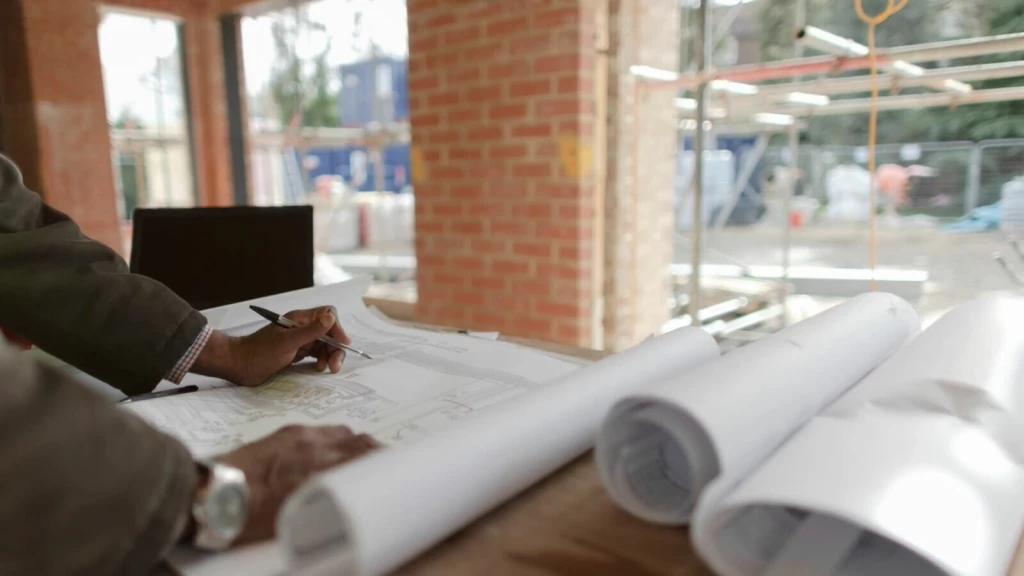
Politicians love promising to build on brownfield land first, but let me share the mathematics that exposes this fantasy.
Brownfield sites in high-demand areas are expensive to develop; contamination remediation, complex ownership structures, and infrastructure limitations add almost 40% to costs on average. These additional costs get passed directly to buyers, doing nothing to improve affordability.
Even if we developed every viable brownfield site in the ten least affordable cities, including London, we'd create just 425,000 homes - a fraction of what's needed. The gap between brownfield capacity and actual need is so vast that pretending otherwise is either innumeracy or deliberate deception. Without Green Belt land development, meeting the UK's growing housing demand will be impossible, and prices will continue to rise inexorably.
And some "brownfield" sites are environmentally more valuable than Green Belt land. Take the Middlewick Ranges case near Colchester - former Ministry of Defence land designated as brownfield, proposed for 1,000 houses. But this is acid pasture, an extremely important habitat for nightingales, which are now rare birds in Britain.
Meanwhile, almost more than 70% of Cambridge's Green Belt is intensive arable farmland - one of the most environmentally damaging land uses. We're protecting industrial-scale monoculture while threatening to build on rare habitat, purely because of arbitrary designations that ignore actual environmental value.
Besides, GIS analysis of land around London within 800 metres of commuter stations identifies sufficient space for approximately one million houses. Extend this to Birmingham, Manchester, Newcastle, and Bristol, and you're looking at another million homes.
The total land required? Just 47,000 hectares - only 1.8% of existing Green Belt land. We could solve the housing crisis while leaving 98% of the Green Belt completely untouched.
Here's the uncomfortable truth: insisting on brownfield first is actually a way to slow down housing delivery while appearing virtuous. It's a performative planning policy that benefits existing homeowners by maintaining scarcity.
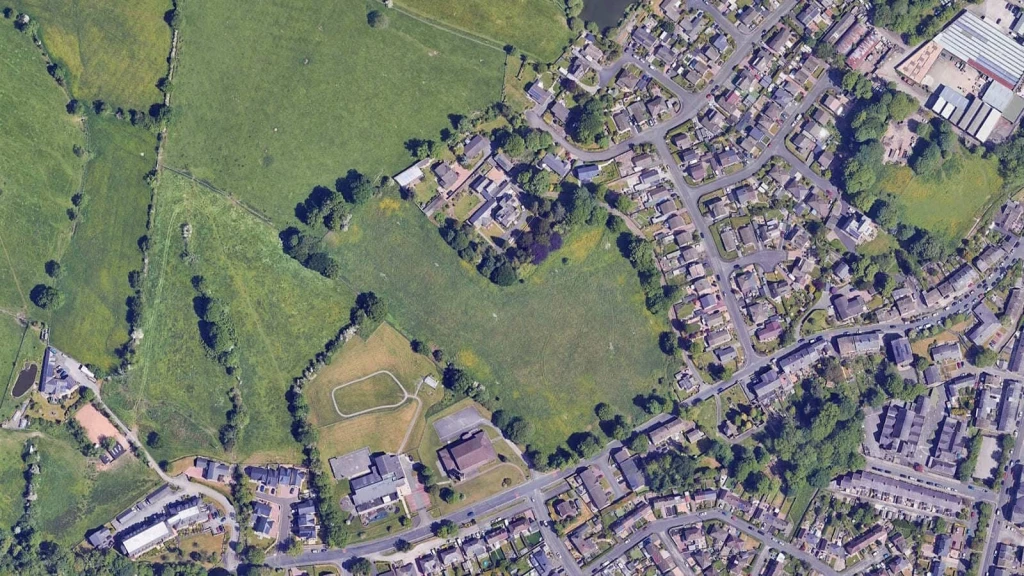
The December 2024 NPPF introduced Grey Belt designation for land that doesn't strongly contribute to preventing sprawl, merger of towns, or protecting historic settings. This includes disused petrol stations, surface car parks, and low-grade agricultural land.
The early results are striking: Planning Inspectors are approving 80% of major residential Grey Belt appeals. This isn't a marginal improvement - it's proof that sensible development can proceed without damaging genuine Green Belt purposes.
Yet planning officers continue refusing applications at the local level, adding months of delays and tens of thousands in costs that ultimately increase house prices further.
But here's the problem: planning officers are either untrained on the new NPPF updates or willfully ignoring them. Under pressure from local NIMBYs, they're taking the path of least resistance - refusing Grey Belt applications they know will be overturned on appeal. It's institutional cowardice that adds months of delay and hundreds of thousands in costs.

The current Green Belt policy has helped create one of the most severe intergenerational wealth divides in modern Britain.
This isn’t the free market at work - it’s the outcome of planning rules that restricted land supply just as homeownership expanded, pushing asset values up for one generation while closing the door on the next.
According to the Resolution Foundation, baby boomers typically bought when homes cost around three to four times average earnings. In contrast, younger adults today face price-to-income ratios that reach eight to twelve times earnings in high-demand cities.
This divergence did not happen by chance; it tracks directly with land-use constraints and rising demand in areas where building outwards became politically impossible.
Homeownership data tells the story bluntly. More than 70% of those born in the 1950s owned a home by their early thirties. For millennials at the same age, ownership sits closer to one-third.
The Institute for Fiscal Studies confirms that the ability to buy now depends heavily on parental support, and without family wealth, many are priced out indefinitely. Meanwhile, the ONS shows that housing makes up the majority of personal wealth in the UK - meaning entry into the housing market remains the most significant determinant of long-term financial security.
This is not a system where hard work reliably leads to ownership. It is one where property wealth increasingly passes through inheritance rather than earnings. In Green Belt-constrained areas in particular, the effect is unmistakable: those who bought before supply was locked down benefit from decades of compounded gains, and those who didn’t are left to compete in a market where scarcity is manufactured, not natural.
Call it what you like, but a housing system where access depends on birth rather than effort looks less like modern capitalism and more like a polished, twenty-first-century form of hereditary privilege.
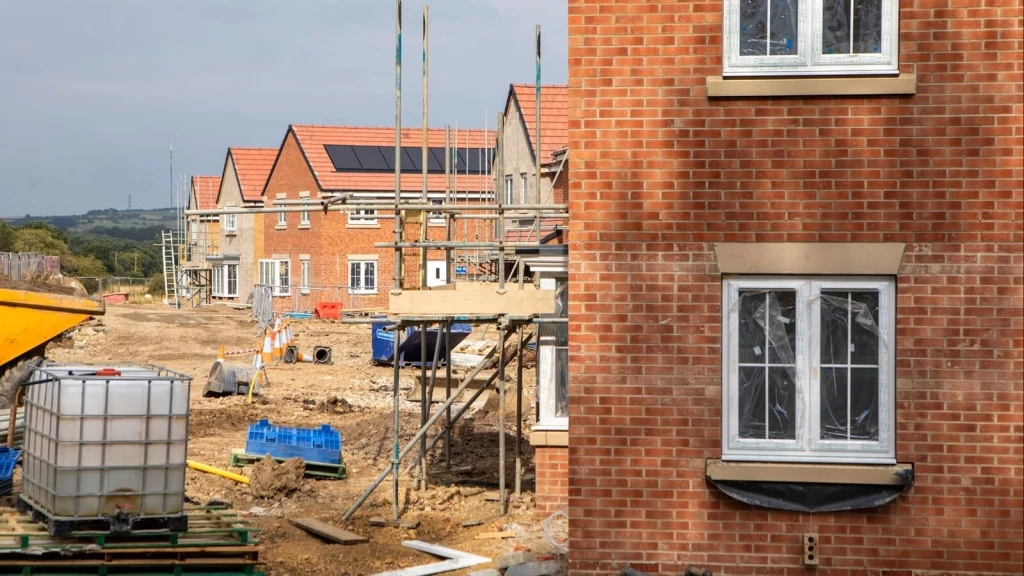
Let's follow the money and name the real beneficiaries of Green Belt policy - because it's not the environment, and it certainly isn't the public.
Strategic land investors are among the biggest beneficiaries of the current system.
Research into land pipelines shows major housebuilders collectively control land capable of delivering hundreds of thousands of homes nationally, with a significant share tied up in long-term strategic sites on the edges of major cities. These holdings grow more valuable with every year of planning inertia - delay isn’t a cost to them, it’s a compounding return.
The scale of value uplift from planning permission is extraordinary and very well documented.
Agricultural land in England typically sells for £20,000-£30,000 per acre (around £50,000-£75,000 per hectare). Grant permission for housing in the South East, and that same land can be worth £2 million-£4 million per hectare, sometimes more in high-demand commuter areas. That is a 30- to 70-fold increase, purely due to planning status - not productive investment.
In certain fringe London boroughs, values can climb even higher. Savills notes that prime development land in outer London can exceed £5 million per hectare where strong transport links meet tight supply.
These gains don’t come from building; they come from the political management of scarcity. When land rationing at the urban edge drives such dramatic uplifts, fortunes are made not through construction, but by holding land until policy shifts.
This is why strategic land speculation is so lucrative: planning constraint creates windfalls measured in millions, while households and young workers bear the cost of scarcity in the form of higher prices, longer commutes and shrinking access to opportunity.
According to Nationwide and ONS data, homeowners in many Green Belt locations have seen substantial capital gains over the past decade, often in the range of £150,000 or more in high-demand commuter belts, driven by rising demand and highly constrained supply.
These rising values aren’t the result of extraordinary investment insight - they are the predictable outcome of planning policies that restrict new housing in areas with strong transport links, schools and employment access. Ordinary homes have become extraordinary wealth assets not through innovation, but through scarcity.
The incentives this creates are obvious. When property becomes a store of wealth rather than simply somewhere to live, existing owners have every motivation to resist change - to attend consultations, object to applications, and maintain the policies that created their windfall. Meanwhile, those who would benefit from new homes nearby do not yet live there, and therefore have no voice in the decision-making process.
This pattern of behaviour is particularly visible in places like Sevenoaks, where around 93% of the district is designated Green Belt. Residents have, over time, self-selected into environments that offer stability, amenities and protected landscapes - and they support planning policies that preserve those advantages.
The planning system, being highly localised in the UK, places decision-making power with those who already live in an area, even though the economic and social benefits of development extend far beyond local boundaries.
What results is a system where local democracy often functions as a veto on future residents, locking in privilege and excluding those who do not yet have a vote.
Here’s the uncomfortable truth: a significant portion of Green Belt land earns more from agricultural subsidies than from agricultural production.
Under the Basic Payment Scheme, average farm subsidies in England were roughly £20,000-£25,000 a year per farm, with larger landholdings receiving substantially more. Many Green Belt farms are low-intensity or marginal in food output terms, yet they benefit from public payments designed to maintain land rather than maximise food production.
The incentive is clear: maintaining land in agricultural use - even at minimal productivity - can be financially safer than allowing change.
And with land scarcity increasing values over time, some landowners can collect subsidies while quietly waiting for long-term planning shifts that may one day transform fields into development assets. It’s not illegal; it’s simply a system designed in a way that rewards stasis.
The speculative appeal of the Green Belt isn’t a conspiracy theory - it’s visible in the land registry.
Research by Transparency International and media investigations have found that offshore companies own land on the edges of London and in other high-demand areas, including land with development potential.
These holdings are rarely about food production or environmental stewardship. They reflect a long-term bet: that pressure for housing will eventually force selective Green Belt release, unlocking land value uplift on a scale few other assets can match.
For instance, turning agricultural land valued at £20,000-£25,000 per hectare into residential land that can exceed £5 million per hectare in prime Green Belt-adjacent areas represents one of the most extraordinary planning-driven wealth gains in Britain - a 200- to 250-fold uplift created not by farming or development, but by the politics of land supply. In a system where planning scarcity is designed into the map, simply waiting for policy to shift can be more lucrative than building anything at all.
Let's be frank: many MPs and councillors own property in Green Belt areas. Parliamentary register of interests shows that over 40% of MPs own multiple properties, many benefiting from Green Belt premiums. They're voting on policies that directly affect their personal wealth. It's not corruption in the legal sense, but it's a massive conflict of interest that nobody wants to discuss.
And the system itself resists change through institutional inertia. A Secretary of State once revealed that the first thing he discovered upon taking office was an appeal that had reached his desk seven years after the initial application.
A development that conformed with the local plan, rejected by the local planning authority because it was in the ward of the chair of the planning committee, who was being lobbied strongly. The chair actually favoured the development but reckoned it would be accepted on appeal. Unfortunately, it wasn't – so seven years of bureaucratic ping-pong later, it landed with the Secretary of State. This is how our "system" actually functions.
A new industry has grown around opposing development. Wealthy residents’ groups and local pressure campaigns now routinely hire planning consultants, lawyers and PR teams to resist even modest proposals.
Some commission selective ecological reports and pursue judicial reviews not to protect nature, but to protect neighbourhood exclusivity and property values. Organisations that do carry out valuable conservation work can, at times, also serve as vehicles for affluent homeowners who want to freeze their surroundings in time.
And now, the playbook has a new weapon: AI-assisted objections. Recent reporting has uncovered tools that scan planning applications, generate “policy-based” objection letters, and even draft speeches for committee meetings - enabling more objections, faster.
But here's the irony: you don’t need a flashy subscription or a cleverly branded “AI objector” tool to generate templated planning objections. Any beginner using ChatGPT could produce the same results in minutes.
What’s being sold as innovation is really just automation of the most basic kind. These tools are less about civic empowerment and more about commodifying resistance to new homes, repackaging familiar NIMBY tactics in a glossy tech wrapper.
With planning departments already stretched and many councils routinely missing statutory decision deadlines, this surge in automated objections risks grinding the system even further to a halt.
Under-resourced planning officers who are struggling to process applications as it is will now face inboxes flooded with AI-generated objections, many of them formulaic and duplicative. Instead of strengthening local democracy, this wave of automated resistance threatens to clog decision-making, delay much-needed homes and increase costs for applicants - all while giving the illusion of public consensus where there may be none.
In other words, rather than improving community engagement, this risks overwhelming planning officers with formulaic, automated submissions and misinformation, and turning public consultation into a volume game rather than a forum for genuine local insight.
The Green Belt has forged a powerful coalition of interests - landowners, homeowners, strategic investors, lobbyists and political actors - each with different motivations but united by one outcome: preserving scarcity.
On the other side are younger generations, renters, key workers and those who cannot yet access property wealth. They do not control land, they do not have lobbyists, and they cannot afford legal teams - yet they shoulder the consequences.
When Green Belt planning permission can transform land values, when professional objection services turn resistance into a business model, when land speculators profit simply by waiting, and when many decision-makers hold property in constrained areas, what we have is not a neutral planning system but a wealth-preservation machine masquerading as a public-interest process.
This is not about villainy. Most participants are behaving rationally within a system full of skewed incentives. But the outcome is clear: a nation where protecting the value of an empty plot becomes more rewarding than building homes for nurses and teachers.
That is not environmental stewardship. It is an ethical failure dressed up in green rhetoric, and a planning framework that prioritises asset protection over societal progress.
We examine these dynamics and their real-world consequences in depth in Green Light to Green Belt Developments. The book also explores how Green Belt policy connects with climate change and the housing crisis, showing why carefully releasing only the most suitable Green Belt land is essential if the UK is to meet the housing needs of a growing population.

The housing crisis, shaped in part by decades of strict Green Belt controls, is not just about strained bank balances - it is reshaping Britain’s social fabric.
Research by the Sutton Trust shows that social mobility in the UK has stalled, and place of birth now plays a major role in life outcomes. Where you grow up increasingly determines your prospects, not simply talent or effort. And when nurses, teachers, and key workers cannot afford to live near the communities they serve, social cohesion starts to erode.
The result is a geography of exclusion. High-income households concentrate in protected, high-amenity areas, while younger and lower-income households are pushed further out, facing lengthening journeys and higher transport costs.
Studies from the New Economics Foundation and others show commuting distances and times have risen significantly in constrained urban regions over the past two decades, driven by planning limits that force homes far from jobs and transport hubs. That pattern is environmentally damaging, economically wasteful, and socially corrosive.
If this trajectory continues, the political consequences will not be gentle. We already have the highest house-price-to-earnings ratio in modern British history in many parts of the country - reaching 8-12 times average earnings in the most pressured cities. If nothing changes, younger generations will increasingly conclude the system is rigged against them.
Stable democracies do not endure when an entire cohort is locked out of asset ownership and security. A country that treats housing as a hereditary privilege rather than a foundation for opportunity cannot expect social peace indefinitely.

Green Belt reform isn’t about pouring concrete over fields. In fact, it’s about dismantling an artificial land scarcity that has turned housing from a basic social foundation into a speculative asset class.
Sensible reforms, particularly releasing lower-quality Grey Belt land in sustainable locations, can unlock homes where people actually need them while protecting genuinely valuable countryside and biodiversity.
The long-term data is stark. England built around 7.4 million homes between 1959 and 1988, but only around 3.4 million in the past 30 years, leaving a deficit of millions of homes relative to post-war delivery rates. And undersupply is most acute where demand and economic opportunity are strongest.
Research comparing growth patterns shows that high-opportunity cities like Oxford and Cambridge have delivered far fewer homes than urban centres with weaker labour markets, despite much stronger population and job growth pressures. In other words, we’re failing to build most where the country needs it most.
And this failure carries a cost. As the BBC recently reported, the UK’s stagnant productivity - worsened by housing-driven labour shortages and long commutes - is now feeding through into higher taxes. When the economy can’t grow fast enough, the state leans more heavily on individuals to fund services. The housing crisis is no longer just a social issue; it’s a fiscal one
The choice before us is clear. Stay with the current model and watch affordability deteriorate, entrenching a divide between those who inherit property wealth and those permanently excluded from it, or pursue targeted, evidence-based reform that allows ordinary people to access ordinary homes. The status quo is not neutral; it is an active decision to privilege existing property wealth over social mobility, economic inclusion, and fairness.
Consider the reality on the ground: when planning inspectors frequently overturn refusals on lower-value Green Belt sites, when essential workers struggle to find housing near hospitals and schools, and when vacant brownfield corners and surface car parks are treated as untouchable, the system stops looking like planning and starts looking like wealth protection with a planning wrapper.
This isn’t how successful planning systems operate elsewhere. Countries like Germany, France and Switzerland balance local input with national housing goals and ensure local authorities share directly in the fiscal benefits of growth.
In Switzerland, where local income tax captures the economic benefits of new residents, communities have a financial incentive to welcome well-planned development. Here, local councils shoulder the service burden while retaining only a fraction of the uplift, and with council tax covering a minority of local spending, resistance becomes rational rather than ideological.
The evidence is increasingly clear: severe land-use restrictions in high-demand areas, including the Green Belt in southern England, are a major driver of Britain’s housing affordability crisis. If we refuse to confront that fact, prices will continue their upward climb, and the social contract that once tied work, aspiration and ownership together will continue to unspool.

Urbanist Architecture’s founder and managing director, Ufuk Bahar BA(Hons), MA, takes personal charge of our larger projects, focusing particularly on Green Belt developments, new-build flats and housing, and high-end full refurbishments.
We look forward to learning how we can help you. Simply fill in the form below and someone on our team will respond to you at the earliest opportunity.
The latest news, updates and expert views for ambitious, high-achieving and purpose-driven homeowners and property entrepreneurs.
The latest news, updates and expert views for ambitious, high-achieving and purpose-driven homeowners and property entrepreneurs.
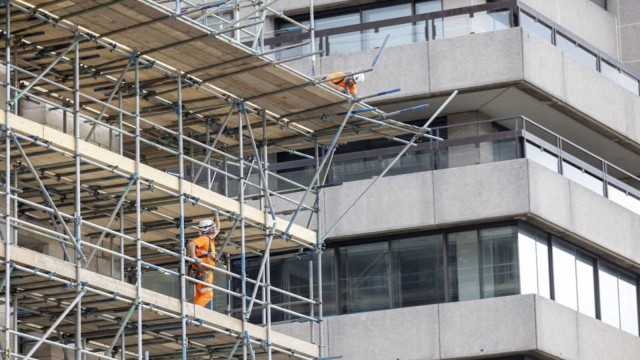






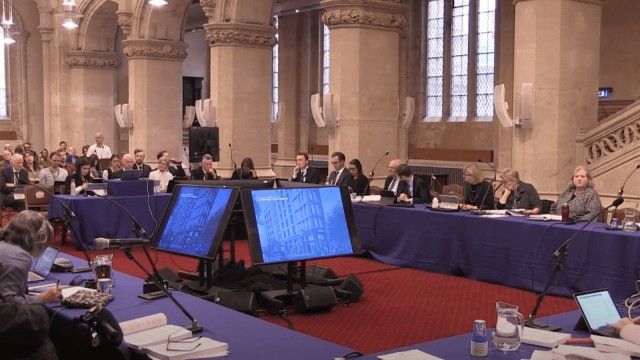

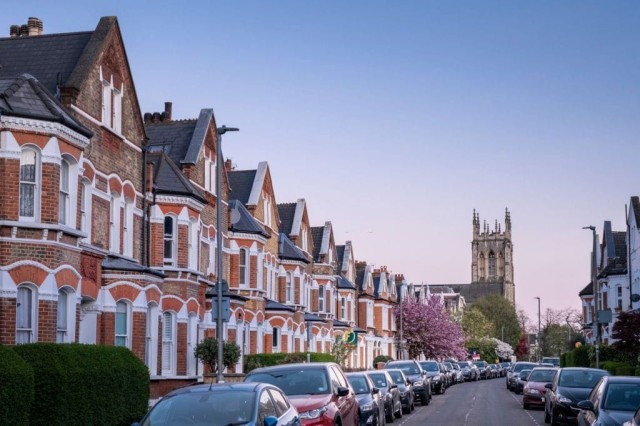
We specialise in crafting creative design and planning strategies to unlock the hidden potential of developments, secure planning permission and deliver imaginative projects on tricky sites
Write us a message